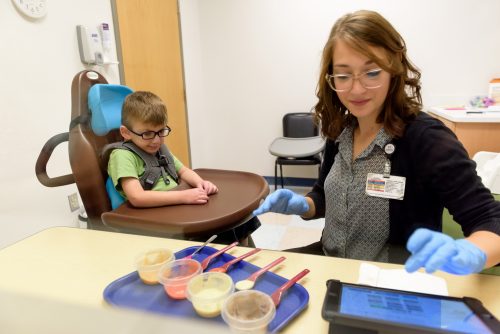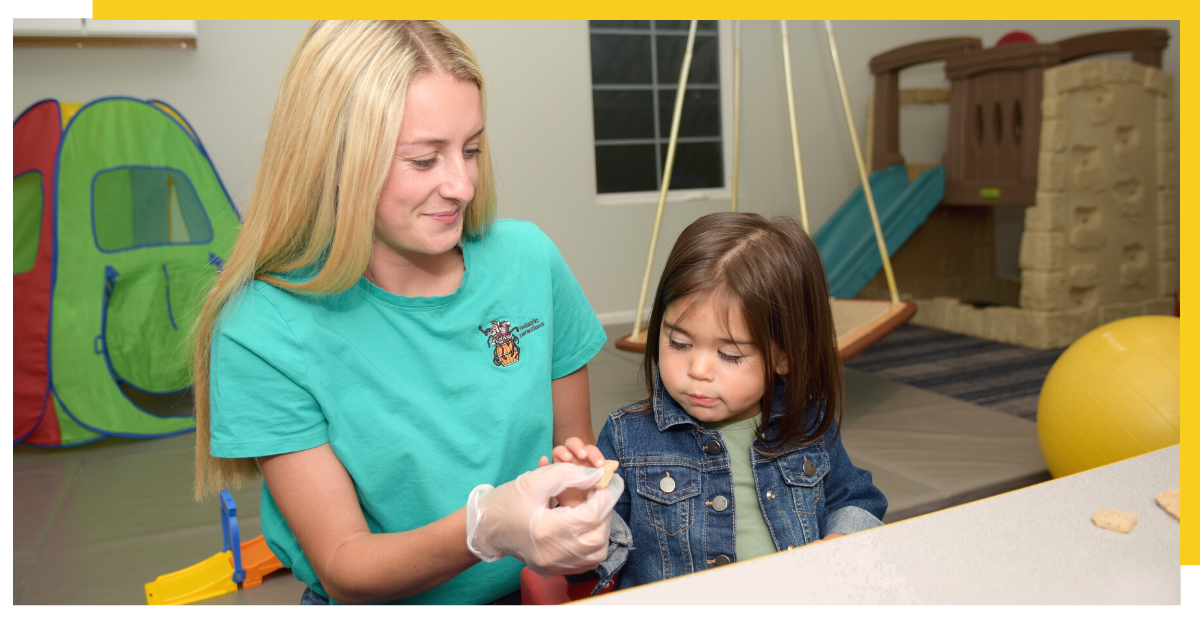Feeding Therapy Long Island: Professional Aid for Your Kid
Wiki Article
Browsing the Path to Successful Feeding: Innovative Approaches and Treatments for Effective Feeding Therapy
Are you battling to locate reliable strategies and interventions for successful feeding therapy? Look no better. This short article will certainly direct you with the course to success, supplying cutting-edge strategies to assess feeding difficulties and set achievable objectives. With evidence-based techniques, you'll learn exactly how to resolve sensory processing concerns and utilize assistive innovation and flexible equipment. And also, we'll show you the value of collaborating with households and caregivers for ideal feeding results. Obtain prepared to navigate the course to effective feeding!Assessing Feeding Difficulties and Identifying Objectives
You should start by examining your kid's feeding difficulties and recognizing details objectives for their therapy. This step is critical in developing an efficient feeding therapy plan. Begin by observing your youngster's feeding patterns and behaviors. Look for any aversions or problems they may have in the direction of particular foods or appearances. Make note of any type of physical or sensory problems that might be influencing their capacity to eat. You can after that set specific objectives for their treatment when you have identified these challenges. These objectives must be sensible and obtainable, concentrating on improving your kid's feeding skills and overall nourishment. You may set a goal for your child to be able to endure a bigger selection of structures or to self-feed with utensils. It is very important to connect these goals with your youngster's feeding specialist so they can customize the therapy sessions to address these details challenges. By examining your youngster's feeding obstacles and setting objectives, you are taking the initial step in the direction of helping them develop successful feeding abilities.Carrying Out Evidence-Based Methods for Feeding Treatment
Executing evidence-based techniques for feeding treatment can bring about positive results for youngsters. You are guaranteeing that the treatments used are supported by scientific research and have actually been verified efficient when you include these approaches right into your child's therapy plan. This strategy boosts the possibility of success and helps address the certain feeding difficulties your kid might be experiencing.By following evidence-based approaches, you can supply your kid with the best feasible treatment and assistance. These techniques may include making use of a selection of sensory experiences during nourishments, such as exploring different textures and flavors, to motivate acceptance of brand-new foods. Additionally, carrying out therapy methods can assist deal with particular consuming behaviors and promote much healthier eating patterns.
An additional important element of evidence-based feeding treatment is entailing the family in the therapy process. By supplying education and support to parents and caregivers, they can play an active duty in helping their youngster conquer feeding difficulties. This collaborative technique enhances the effectiveness of therapy and promotes enduring favorable adjustments in your kid's eating behaviors.

Attending To Sensory Processing Issues in Feeding Treatment
Dealing with sensory handling issues in feeding therapy can be challenging, however it is essential for promoting a favorable eating experience for children. When you encounter a youngster with sensory processing problems throughout mealtime, it is necessary to comprehend that their responses to particular textures, preferences, smells, or even sounds are not willful (feeding therapy farmingdale ny). By recognizing and dealing with these concerns, you can aid produce a helpful setting that urges healthy eating behaviors
This strategy permits the youngster to become acquainted with the food and its sensory residential properties at their own speed. In addition, providing a range of structures and flavors can aid desensitize their sensory system and expand their food choices.
Engaging the youngster in sensory play activities can additionally be advantageous. Motivate them to explore different textures, such as squishing, pressing, visit this page or touching numerous food things. This can aid stabilize sensory input and minimize hostilities to specific structures.
Another essential element is supplying a organized and calm eating atmosphere. Reduce interruptions, such as intense lights or loud sounds, which can overwhelm their senses and prevent their capability to concentrate on eating. Developing a original site foreseeable routine and utilizing aesthetic timetables can also assist the kid feel more protected and in control throughout nourishment.

Utilizing Assistive Innovation and Adaptive Tools
Utilizing assistive modern technology and adaptive equipment can substantially improve the feeding experience for children with sensory processing difficulties. When you have problem with sensory processing, nourishment can be tough and overwhelming. With the right devices, you can make it a much more successful and delightful experience.One choice is utilizing specialized tools and plates designed to suit your requirements. These tools might have textured takes care of or a bigger grip, making them much easier to hold and manipulate. Plates with separated areas can help separate different foods and stop them from touching, which can be a source of pain for some children.
In enhancement to specialized utensils and plates, there are also assistive gadgets that can be utilized throughout feeding. A heavy vest or lap pad can provide deep stress input, aiding to soothe and regulate your sensory system. A vibrating tooth brush or chewable precious jewelry can offer dental sensory stimulation, making the act of consuming a lot more satisfying.
Modern technology can likewise play a role in boosting the feeding experience. There are applications and devices readily available that can offer auditory or aesthetic hints, such as timers or triggers, to help you remain concentrated and arranged throughout nourishment.
Working Together With Families and Caregivers for Successful Feeding Results
When working together with caregivers and family members, you can interact to create a nurturing and encouraging setting for successful feeding end results. By involving families and caretakers in the feeding treatment procedure, you can obtain beneficial understandings into the kid's feeding behaviors, obstacles, and choices. feeding therapy long island. This partnership enables for an all natural approach to feeding therapy, attending to not just the physical wikipedia reference aspects but likewise the psychological and emotional aspects that might affect a child's feeding capacitiesOne key facet of teaming up with caretakers and family members is supplying education and training. By equipping them with expertise and skills, they can actively take part in the feeding therapy process and support the child's development outside of treatment sessions. This can consist of teaching them feeding techniques, approaches for handling nourishment actions, and recognizing the value of consistency and routine in establishing healthy and balanced eating routines.
In addition, involving families and caregivers in personal goal setting and treatment preparation makes sure that their viewpoints and objectives for the child are taken into account. By functioning with each other, you can create possible and practical objectives that align with the family members's top priorities and worths - feeding therapy farmingdale ny. This joint approach cultivates a sense of ownership and empowerment, producing a strong structure for successful feeding outcomes
Additionally, open and normal communication with caretakers and households is essential for effective collaboration. By maintaining ongoing dialogue, you can address concerns, give support, and make needed modifications to the feeding treatment plan as needed. This communication likewise enables sharing development updates, commemorating accomplishments, and determining any kind of difficulties or barriers that might arise.

Conclusion
You have actually explored different strategies and interventions for reliable feeding treatment, such as examining obstacles, carrying out evidence-based techniques, addressing sensory processing issues, and utilizing assistive technology. Bear in mind to constantly stay positive and innovative in your technique to feeding therapy.It's important to communicate these goals with your child's feeding therapist so they can customize the treatment sessions to resolve these particular obstacles.Carrying out evidence-based methods for feeding treatment can lead to positive end results for children.Attending to sensory handling issues in feeding treatment can be challenging, but it is crucial for advertising a positive eating experience for children. By involving families and caregivers in the feeding treatment process, you can get important understandings right into the kid's feeding preferences, practices, and difficulties. By outfitting them with knowledge and skills, they can actively take part in the feeding therapy process and support the child's development outside of therapy sessions.
Report this wiki page